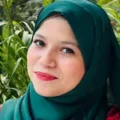Athletic spaces have long served as the foundation for physical training, competition, and community engagement. As we look to the future, it is essential to understand the evolving needs of athletes and the impact of technology, design, and sustainability on these environments.
The Rise of Multi-Use Facilities
One of the most significant trends in athletic space design is the shift toward multi-use facilities. These versatile venues cater to various sports and activities, allowing communities to maximize their resources. By incorporating spaces for traditional sports like basketball and soccer alongside emerging activities like eSports, these facilities foster inclusivity and broaden participation. Incorporating sports field construction into the design of multi-use facilities ensures that these venues are equipped to host various athletic events, catering to the diverse needs of the community.
Designing adaptable spaces not only meets diverse athletic needs but also increases community engagement. Multi-use facilities can host events, competitions, and recreational activities, creating a hub for social interaction and fostering a sense of belonging. This approach also encourages collaboration among different sports organizations and local governments to maximize funding and resources.
Integrating Technology
The future of athletic spaces is heavily influenced by advancements in technology. Smart facilities equipped with innovative systems enhance athlete training and overall performance. From wearable devices that monitor fitness levels to performance analytics platforms, technology is revolutionizing how athletes train and compete.
Moreover, digital signage and interactive displays enhance spectator experiences, providing real-time updates and engaging content during events. Virtual and augmented reality technologies can also offer immersive training experiences, allowing athletes to visualize their performance and refine their skills in a controlled environment. Embracing technology ensures that athletic spaces remain relevant and appealing to younger generations.
Prioritising Sustainability
Sustainability is a critical consideration in the future of athletic spaces. As environmental awareness grows, the demand for eco-friendly designs increases. Athletic facilities must focus on sustainable building practices, incorporating renewable energy sources, water-efficient systems, and recycled materials.
Creating green spaces around athletic facilities can improve air quality and provide natural settings for relaxation and recreation. Additionally, implementing energy-efficient technologies, such as LED lighting and smart climate control systems, reduces operational costs and the overall carbon footprint of the facility.
Sustainable design not only benefits the environment but also enhances community health and well-being. Athletic spaces that integrate nature, such as parks and gardens, encourage outdoor activity and promote mental well-being.
Fostering Community Engagement
The future of athletic spaces extends beyond the athletes themselves. Engaging the surrounding community is crucial for the success of any athletic facility. Designing spaces that invite community involvement, such as multipurpose fields or outdoor fitness stations, promotes physical activity for all ages.
Creating programs and events that involve local schools, clubs, and organizations fosters a sense of ownership and pride among community members. This collaborative approach helps build a supportive environment that encourages participation and investment in athletic programs.
Conclusion
As we navigate the future of athletic spaces, it is vital to embrace trends that prioritize multi-use designs, technology integration, sustainability, and community engagement. These elements will ensure that athletic facilities not only serve athletes effectively but also enhance community well-being and participation. By adapting to these changes, we can create dynamic, inclusive, and sustainable athletic environments that meet the needs of future generations.
ⓘ As part of our ongoing support for startups and SMEs, LAFFAZ Media publishes feature and resource articles that may include references and links to external websites. These inclusions are selected at our editorial discretion to provide valuable information or suggestions to our readers. LAFFAZ Media does not control, endorse, or assume responsibility for the content or practices of external websites. For more details, please refer to our Terms and Conditions.






